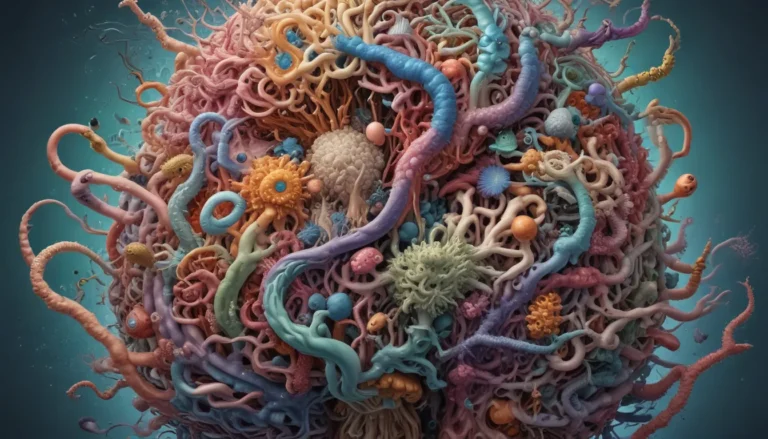A Note About Images: The images used in our articles are for illustration purposes only and may not exactly match the content. They are meant to engage readers, but the text should be relied upon for accurate information.
Gene transcription factors hold the key to unraveling the mysteries of gene expression, serving as the conductors of the cellular orchestra. These remarkable proteins dictate which genes are turned on or off, exerting a profound influence on crucial biological processes, from development to disease. Join us as we embark on an enlightening expedition to uncover the intricacies of gene transcription factors and their extraordinary functions.
Gene Transcription Factors: The Maestros of Genetic Regulation
At the core of genetic regulation lie gene transcription factors, proteins that wield the power to control gene expression by binding to specific regions on DNA. Acting as master regulators, these proteins orchestrate the transcription process, determining the fate of genes within the cellular milieu.
Revealing the Diverse Functions of Transcription Factors
Transcription factors exhibit a diverse range of functions, capable of activating or repressing gene expression as needed. From guiding embryonic development to orchestrating responses to environmental cues, these versatile proteins are integral players in various biological processes.
Unveiling the Three Main Types of Transcription Factors
Activators, repressors, and enhancers comprise the three primary types of transcription factors, each with a distinct role in shaping gene expression. Activators stimulate transcription by binding to specific DNA sequences, while repressors dampen transcription. Enhancers, on the other hand, enhance the activity of transcription factors, further fine-tuning gene expression.
Exploring Transcription Factors in Complex Networks
Collaborative in nature, transcription factors do not operate in isolation but rather form intricate networks with other proteins and regulatory elements. This interplay allows for precise control and coordination of gene expression, ensuring the harmonious functioning of cellular processes.
Unraveling the Link Between Transcription Factors and Disease
Disruptions in the regulation of transcription factors can give rise to a spectrum of diseases, ranging from cancer to autoimmune disorders. Mutations or dysregulation of these proteins have been implicated in various pathological conditions, underscoring their critical role in maintaining cellular homeostasis.
Embracing the Coordinated Regulation by Transcription Factors
The synergy between transcription factors is vital for the coordinated regulation of gene expression. Through collaborative efforts, these proteins navigate complex signaling pathways, enabling cells to respond effectively to diverse external cues and fostering the proper development and function of tissues and organs.
Navigating the Influence of Environmental Factors on Transcription Factors
Transcription factors are responsive to environmental stimuli such as stress, hormones, and external signals, modulating gene expression in accordance with these cues. This adaptability allows organisms to adjust to changing environmental conditions, showcasing the dynamic nature of genetic regulation.
Pioneering Evolution Through Transcription Factors
Throughout the course of evolution, transcription factors have played a pivotal role in shaping the genetic landscapes of species. Alterations in transcription factor binding sites have contributed to the diversity of organisms and facilitated their adaptation to varying environments, underscoring the evolutionary significance of these proteins.
Harnessing Transcription Factors as Therapeutic Targets
Given their central role in gene regulation, transcription factors have emerged as promising targets for therapeutic interventions. By modulating the activity of these proteins, researchers aim to restore normal gene expression patterns, potentially paving the way for innovative treatment strategies across a spectrum of diseases.
Embark on a captivating journey into the realm of gene transcription factors, where the intricate dance of genetic regulation unfolds before your eyes. Delve deeper into these fascinating insights to gain a greater appreciation for the complexity and elegance of molecular biology, setting the stage for groundbreaking discoveries in medicine and biotechnology.
Concluding Thoughts
In conclusion, gene transcription factors stand as pillars of genetic regulation, sculpting the landscape of gene expression and shaping the course of biological processes. Their profound impact on development, disease, and evolution highlights the pivotal role they play in the intricate web of molecular interactions that govern life itself.
Step into the realm of gene transcription factors and witness the marvels of molecular biology come to life. As we continue to unravel the secrets of these extraordinary proteins, we pave the way for a deeper understanding of life’s fundamental processes and open new vistas of exploration in the field of biology.
FAQs: Exploring the Intriguing World of Gene Transcription Factors
Q: What are gene transcription factors, and how do they function?
A: Gene transcription factors are proteins that regulate gene expression by binding to specific DNA sequences and modulating the transcription of genes. They can either activate or repress gene expression based on environmental cues.
Q: What role do gene transcription factors play in disease?
A: Dysregulation or mutations in gene transcription factors can lead to various diseases, including cancer, autoimmune disorders, and neurodegenerative conditions. Targeting transcription factors offers potential therapeutic avenues for disease management.
Q: How do gene transcription factors respond to environmental influences?
A: Gene transcription factors can be influenced by environmental factors such as stress, hormones, and external signals, altering gene expression patterns to adapt to changing conditions. This adaptability underscores the dynamic nature of genetic regulation.
Q: Can gene transcription factors be targeted for therapeutic purposes?
A: Yes, gene transcription factors have emerged as promising therapeutic targets, with the potential to modulate gene expression and ameliorate disease pathways. By harnessing the regulatory functions of transcription factors, researchers aim to develop novel treatment strategies.
Q: What is the significance of gene transcription factors in evolution?
A: Gene transcription factors have played a crucial role in the evolution of species, contributing to genetic diversity and enabling organisms to adapt to diverse environments. Changes in transcription factor binding sites have shaped the genetic landscapes of living organisms.
Q: How are gene transcription factors classified, and what are their key functions?
A: Gene transcription factors are categorized into activators, repressors, and enhancers, each with distinct roles in regulating gene expression. Activators stimulate transcription, repressors inhibit transcription, and enhancers enhance the activity of transcription factors, collectively fine-tuning gene expression.
Embark on a fascinating journey through the realms of gene transcription factors, where the captivating intricacies of genetic regulation await your exploration. Discover the profound influence of these master regulators on the tapestry of life, as we unravel the mysteries of molecular biology and pave the way for groundbreaking discoveries in the realm of genetic research.






